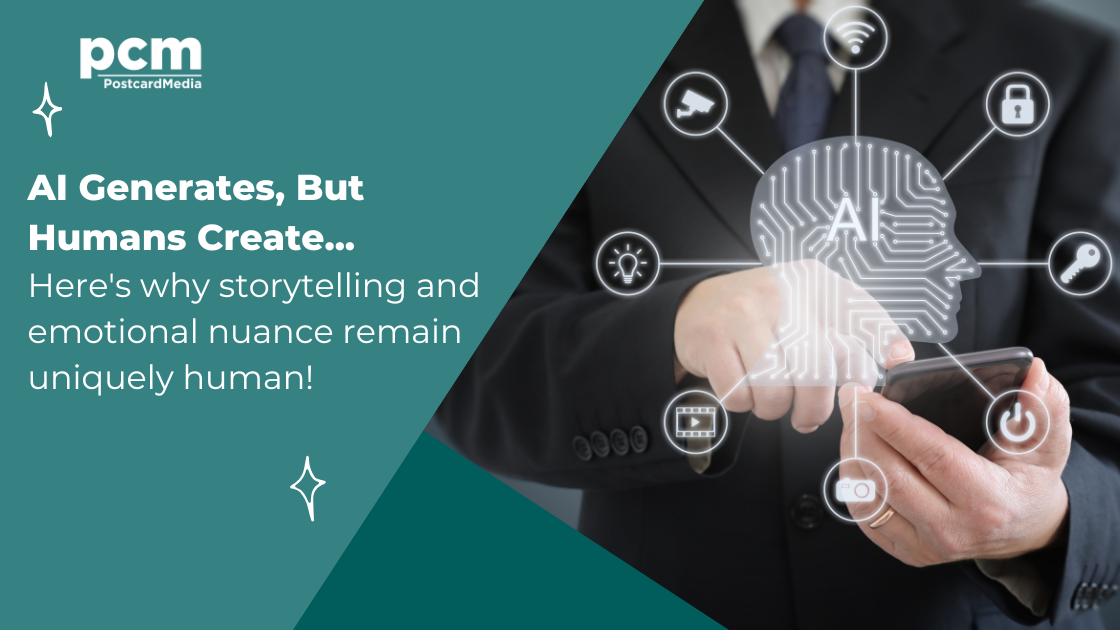Here’s what most people miss about AI in copywriting: they think it’s about faster output. It’s actually about something far more exciting, amplifying human judgment in ways we’ve never had before!
We’ve seen copywriters discover incredible new possibilities with AI. We’ve also seen them transform from word-generators into strategic thinkers who happen to craft brilliant messages. The difference comes down to understanding what AI actually amplifies.
The Real Copywriting Problem AI Can’t Solve
AI can generate words. It can even generate good words. But it cannot read the room.
When Nike launched “Just Do It,” the genius wasn’t in the words themselves. It was in understanding that their audience was tired of overthinking fitness. They needed permission to be imperfect, to start messy, to just begin.
AI would have A/B tested that insight to death. It would have suggested “Achieve Your Fitness Goals” or “Start Your Fitness Journey Today.” Technically correct. Strategically worthless.
This is why copywriters aren’t writers! We’re behavioral strategists, who happen to use words.
What AI Actually Amplifies
The best copywriters use AI like a research assistant, not a replacement brain. They’re asking it to:
- Surface forgotten angles: “What are 15 ways people fail at budgeting?” Then they dig into the emotional reality behind #7 that everyone else ignores.
- Pressure-test assumptions: “Here’s my hypothesis about why our customers switch providers. What am I missing?” The AI response becomes a starting point for deeper customer interviews.
- Speed up the mundane: Generate 50 subject line variations so they can focus on the one insight that matters.
But here’s the crucial part: they’re not asking AI what to say. They’re using it to figure out why their audience should listen.
The Creativity Myth
Everyone talks about “human creativity” like it’s some mystical force. That’s not helpful. What copywriters actually bring is contextual creativity — the ability to connect dots that only make sense in a specific moment, for a specific audience, solving a specific problem.
When Dollar Shave Club launched with their irreverent “Our Blades Are Great” approach, the creativity wasn’t in being edgy. Plenty of brands try that. The creativity was in recognizing that their audience was exhausted by razor marketing that treated shaving like a spiritual experience. They needed someone to acknowledge that it’s just hair removal.
AI sees patterns in data. Copywriters see patterns in human behavior. Completely different skill sets.
The Strategic Shift
Smart copywriters are evolving from word-generators to insight-generators. They’re spending less time writing and more time understanding:
What assumptions is our audience making that they shouldn’t be?
– What obvious solution are they avoiding, and why?
– What do they believe about our category that’s holding them back?
– What would they need to believe to take action?
Then they craft messages that shift those beliefs. The actual writing becomes the easy part.
Why This Matters More Than Ever
In a world where everyone has access to AI-generated content, originality becomes exponentially more valuable. The kind that comes from genuinely understanding what your audience needs to hear, and having the confidence to say it.
AI democratizes competent writing. It amplifies strategic thinking.
The copywriters who are thriving use AI to handle the mechanical work so they can focus on the human work: understanding what drives behavior, crafting messages that change minds, and building the kind of trust that turns strangers into customers.
The future belongs to copywriters who think like strategists and use AI like the powerful amplifier it is, and expanding their creative capacity rather than replacing it!

